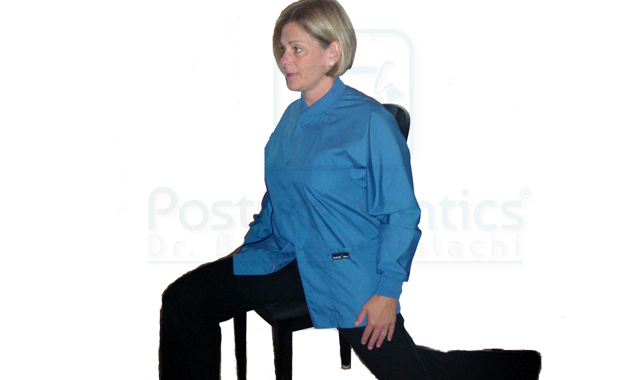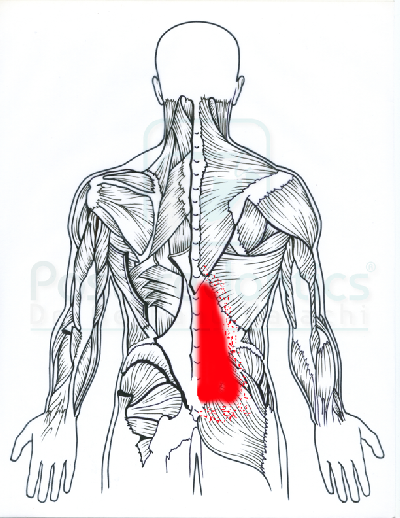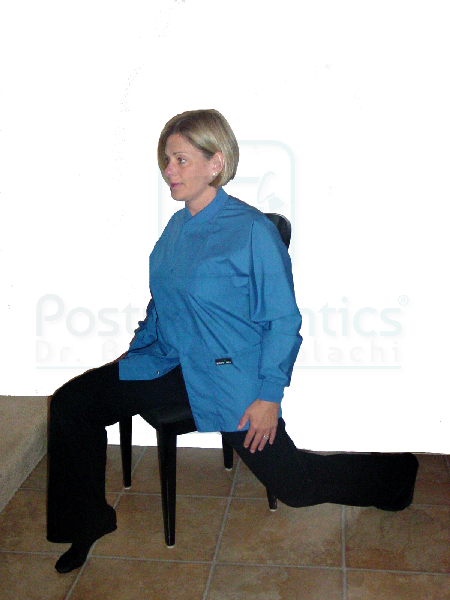Trigger points and low back pain in dentistry
What are trigger points, and how can you avoid the pain they can cause?

As a dental professional, you have probably already experienced trigger points, whether you know it or not!
A trigger point is a group of muscle fibers that are in a constant state of contraction. It feels like a hard knot, and when pressed upon may be painful locally or refer pain to a distant part of the body. Trigger points may be active (painful) or latent (causing stiffness and restricting range of motion). Because they are caused by prolonged muscle contraction, postural asymmetry and mental stress, it is easy to see why trigger points are so common among dental professionals.
Related article: 5 steps to a pain-free dental career
If allowed to persist untreated, some trigger points can cause compression on nerves and contribute to syndromes such as thoracic outlet syndrome or pronator teres syndrome (a carpal tunnel-type pain). Trigger points are often the cause behind “mysterious” pain syndromes that elude Western medicine practitioners.
The postural demands of delivering dental care predispose dental operators to trigger points in some muscles more than others. These muscles tend to become tight, short, weak and can refer pain to specific areas in the body. One of these muscles that is especially problematic in dentistry is the iliopsoas muscle. Trigger points that develop here can lead to low back pain and also pain in the upper buttocks and anterior thigh.
Fig. 1

The iliopsoas (pronounced ilio-so´-az) muscle is constantly activated when sitting actively (not resting on a backrest) in dentistry, which is a majority of the time for most operators. Located very deep on the front of the hip, this muscle functions to flex the hip, abduct the thigh outward and laterally rotate the leg, as is often seen among operators who “straddle” the patient chair in operatories. Iliopsoas trigger points are especially aggravated by prolonged sitting with the hips acutely flexed - 90 degrees or more (i.e., on a non-tilting seat pan).
Trigger point pain in this muscle is referred to the low back (Fig. 1) and sometimes the upper buttocks and anterior thigh. Pain is also common when walking and relieved when lying down and flexing the hip. Trigger points in this muscle can cause improper posture, which aggravates other muscles, leading to trigger point development in them.
Identifying tightness in the hip flexor muscle requires a special test (the “Thomas Test”), performed by a physical therapist or similar healthcare practitioner. There would be palpable tightness and pain in the muscle as well. The quadratus lumborum muscle should also be assessed for involvement, as these two muscles are often partners in crime. Effective treatment of trigger points is essential and should be performed by a healthcare practitioner trained in trigger point therapy or having a CNMT (certified neuromuscular therapist) designation.
Up next: How to prevent trigger points
Exercises to prevent iliopsoas trigger points
- Hip angle. Ensure you are sitting with a hip angle greater than 105 degrees. A stool with a tilting seat pan or a saddle stool work well. You may also retrofit your non-tilting stool with an ergonomic wedge-shaped cushion
- Iliopsoas seated stretch. Sit on the edge of a chair (without armrests), with one buttock hanging off the edge (Fig. 2).
Fig. 2

- Let the outside leg drop down, and slide the foot backward until a stretch is felt in the front of the thigh. Hold 2-3 breath cycles.
- Prone push-up. A yoga move, also known as the “Cobra.” Lie face down on the floor with hands at shoulder level. Gently and slowly push up, making sure you keep the hips pressed against the floor. Hold 30 seconds.
- Hamstring stretch. There are many ways to stretch the hamstring muscle. Always ensure that your knee is straight and you are bending forward from the hips, not the back. Tight hamstrings can cause a posterior tilt of your pelvis, which can overload the iliopsoas muscle. Hold 30 seconds.
Conclusion
Weak abdominal and gluteal muscles also contribute to overload and trigger points in the iliopsoas muscle in seated occupations, such as dentistry. You can find specific exercises that strengthen these muscles as well as more iliopsoas stretches in the “Smart Moves for Dental Professionals On the Ball” home exercise kit at posturedontics.com.
There are numerous potential causes of low back pain, which is why you should always consult your doctor for proper diagnosis. However, with a conscientious routine of ergonomic strategies in the operatory and proper stretching/strengthening, low back pain caused by problematic trigger points in the iliopsoas muscle can be prevented.